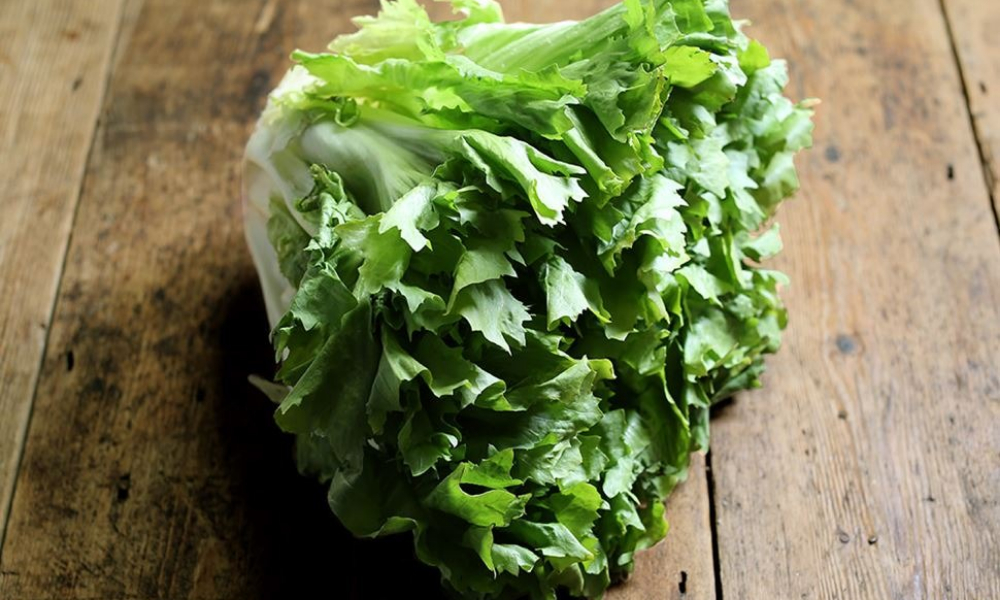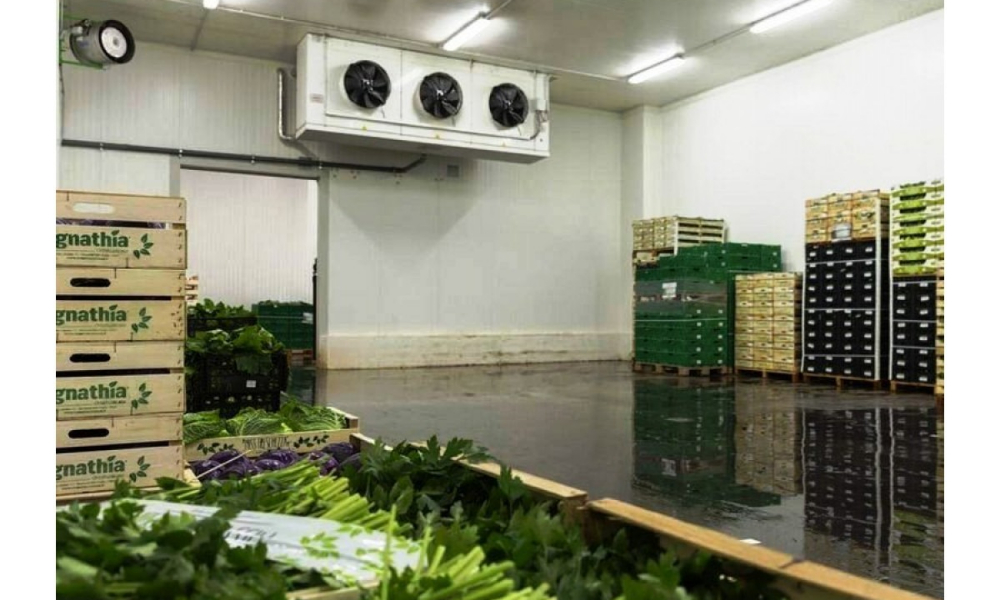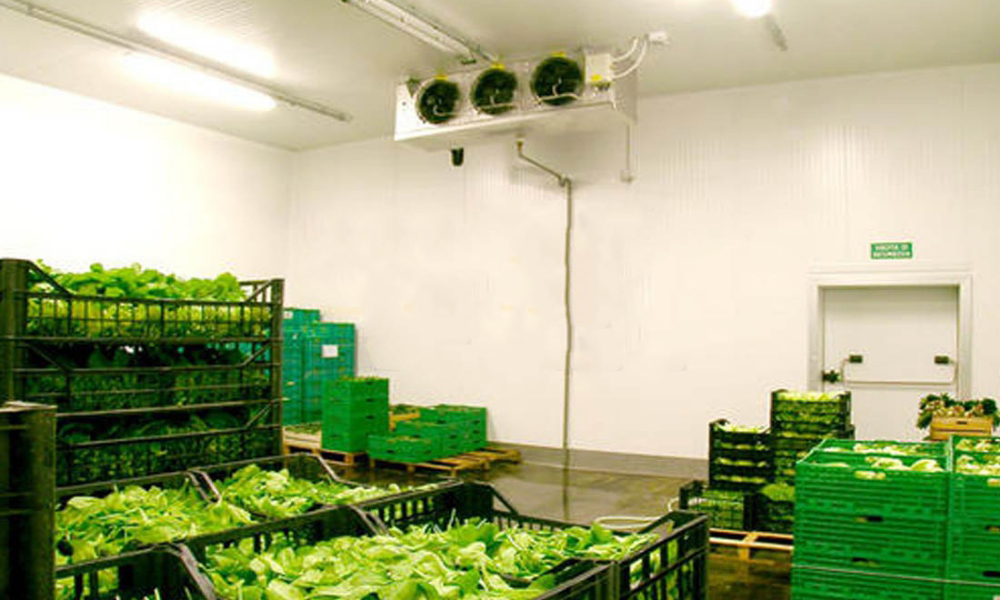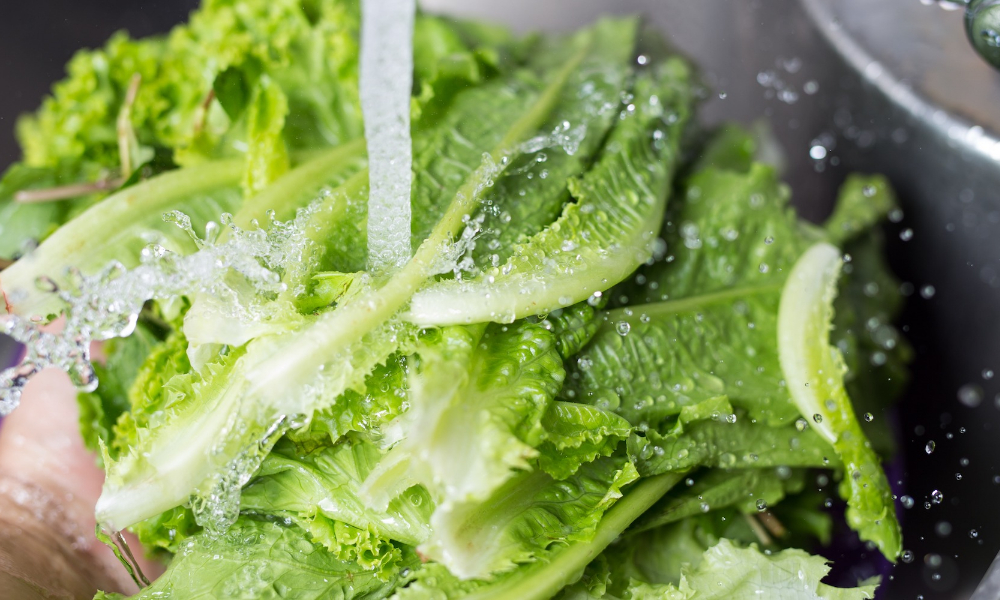Comprehensive Guide to Storing Lettuce in Cold Storage
Lettuce is a popular and nutritious vegetable used in salads and many dishes. However, due to its delicate texture and high water content, lettuce spoils quickly. Proper storage of lettuce in cold storage can help maintain its freshness, flavor, and nutritional value.
The first step is selecting quality lettuce for storage in cold storage
To ensure the quality of lettuce, its leaves should be bright green, shiny, and free of yellow or brown spots. The leaves should also be crisp and brittle, with no softness or sliminess. The stem of the lettuce should be white or light green and free of signs of decay. Avoid buying lettuce with black or brown spots and insects. Medium-sized and symmetrical lettuces are of the best quality, and Romaine and salad lettuces are good choices due to their crisp leaves and longer shelf life. Buying lettuce early in the morning and from local markets guarantees more freshness.
Packaging lettuce in cold storage
Proper packaging of lettuce is one of the key steps in maintaining its freshness and quality. Suitable packaging can prevent early spoilage, reduce moisture loss, and preserve the flavor and nutritional value of the lettuce.
Preparing lettuce for packaging, choosing suitable packaging materials, effective packaging methods, and adjusting storage conditions after packaging are important topics in lettuce packaging. Proper packaging of lettuce is one of the key steps in maintaining its freshness and quality. Suitable packaging can prevent early spoilage, reduce moisture loss, and preserve the flavor and nutritional value of the lettuce.
Proper preparation of lettuce before packaging is a critical step in maintaining its freshness and quality. This process includes washing, drying, and preparing the leaves for packaging. First, gently wash the lettuce leaves with cold water to remove any dirt, contaminants, and insects. Using cold water helps retain the crispness of the leaves and prevents them from becoming limp. After washing, thoroughly dry the leaves with a soft towel or vegetable dryer. Completely drying the leaves is very important as excess moisture can cause faster decay and spoilage of the lettuce.
Next, the cleaned and dried leaves should be prepared for packaging. It is best to place the leaves in layers with adequate spacing to allow air to circulate well among them. This prevents the leaves from being compressed and damaged and helps maintain their freshness. Careful preparation of lettuce for packaging not only extends its storage life but also ensures that the lettuces remain in their best condition, retaining their flavor and nutritional value.
Required temperature and humidity for storing lettuce in cold storage
Temperature Storing lettuce in cold storage requires careful adherence to temperature and humidity conditions to maintain the freshness and quality of this sensitive vegetable. Suitable temperature and humidity can prevent spoilage, reduce wilting speed, and preserve the crispness and freshness of lettuce. The ideal temperature for storing lettuce in cold storage is between 32 to 36 degrees Fahrenheit (0 to 2 degrees Celsius). At this temperature, the respiration rate of lettuce slows down, resulting in lower energy consumption and longer storage life, limiting the growth of microorganisms such as fungi, and delaying wilting, keeping the lettuce fresh.
Humidity High relative humidity in the cold storage environment is also essential for storing lettuce. Relative humidity between 95 to 100 percent provides the best conditions for lettuce. This level of humidity prevents water loss and drying out of the lettuce leaves, maintaining their freshness, preventing them from becoming dry and cracked.
In conclusion, storing lettuce in cold storage with precise temperature and humidity control can help maintain the freshness, crispness, and quality of this sensitive vegetable. A temperature between 32 to 36 degrees Fahrenheit (0 to 2 degrees Celsius) and relative humidity between 95 to 100 percent are the best conditions for storing lettuce. Regular monitoring and adjustment of these conditions can prevent spoilage and quality loss of lettuce, maximizing its storage life.
Ventilation and airflow in lettuce storage cold storage
Managing ventilation and airflow in cold storage plays a crucial role in maintaining the freshness and quality of lettuce. Proper ventilation and even airflow distribute temperature and humidity evenly throughout the cold storage, preventing issues such as microorganism growth and decay.
Importance of proper ventilation Proper ventilation is essential for storing lettuce in cold storage for the following reasons:
Preventing stagnant air areas: Stagnant air areas can lead to moisture accumulation and increased bacterial and fungal growth, causing lettuce spoilage.
Even distribution of temperature and humidity: Proper ventilation helps ensure that temperature and humidity are evenly distributed throughout the cold storage, preventing sudden changes that can damage lettuce.
Using ventilation systems To ensure proper ventilation, the use of advanced and efficient ventilation systems is necessary.
Fans and blowers: Using appropriate fans and blowers can help distribute air evenly in cold storage. These devices should be installed in a way that allows airflow to reach all areas of the cold storage.
Mechanical ventilation systems: Using mechanical ventilation systems with adjustable speed and airflow direction can improve ventilation and prevent the formation of stagnant air areas.
Maintenance and monitoring of ventilation systems
Regular maintenance and monitoring are essential to ensure optimal performance of ventilation systems.
Periodic inspection of equipment: Fans, blowers, and other ventilation equipment should be regularly inspected and repaired or replaced as needed.
Regular cleaning: Regular cleaning of ventilation equipment prevents dust and other particles from accumulating and reducing their performance.
Differences in storing lettuce compared to other fruits and vegetables Lettuce, as a leafy vegetable, has significant differences in storage compared to other fruits and vegetables. These differences are due to its delicate texture, high water content, and greater sensitivity to environmental conditions.
Delicate texture and higher sensitivity to physical damage Lettuce: Lettuce leaves are very delicate and thin, making them more sensitive to physical damage such as pressure, bruising, and cuts. This feature requires more care in packaging and handling.
Other fruits and vegetables: Many fruits and vegetables have firmer and more resilient textures, making them less sensitive to physical damage.
High water content Lettuce: Lettuce has a high water content, which helps maintain its freshness and crispness. However, this feature also makes lettuce wilt faster and more sensitive to environmental humidity.
Other fruits and vegetables: Some fruits and vegetables, such as potatoes and carrots, have lower water content and are less sensitive to changes in environmental humidity.
Need for high relative humidity Lettuce: Lettuce requires relative humidity between 95 to 100 percent to prevent leaf drying and wilting.
Other fruits and vegetables: The humidity needs of fruits and vegetables vary. For example, apples and citrus fruits are well-preserved at lower relative humidity (85 to 90 percent).
Sensitivity to temperature Lettuce: Lettuce should be stored at low temperatures (32 to 36 degrees Fahrenheit or 0 to 2 degrees Celsius). Higher temperatures can accelerate spoilage, and lower temperatures may cause freezing and damage to lettuce texture.
Other fruits and vegetables: The storage temperature of various fruits and vegetables differs. For example, tomatoes and bananas are damaged at lower temperatures and should be stored at higher temperatures.
Sensitivity to ethylene Lettuce: Lettuce is very sensitive to ethylene, a gas produced by many fruits during the ripening process. Ethylene can cause yellowing and accelerated spoilage of lettuce leaves.
Other fruits and vegetables: Some fruits and vegetables, such as apples and tomatoes, produce ethylene and should be stored separately from lettuce. Others may also be sensitive to ethylene but to varying degrees.
Packaging and handling Lettuce: Due to lettuce's high sensitivity to physical damage and humidity, its packaging must protect it from pressure and impact while providing adequate ventilation to prevent moisture accumulation.
Other fruits and vegetables: The packaging and handling of other fruits and vegetables may require different methods. For example, apples need sturdy packaging to prevent impact but require less ventilation compared to lettuce.
Due to its delicate texture, high water content, and sensitivity to temperature and humidity, lettuce requires special storage conditions that distinguish it from other fruits and vegetables. Considering these differences, proper lettuce storage requires more attention to temperature control, humidity, packaging, and handling to maintain its freshness and quality.





